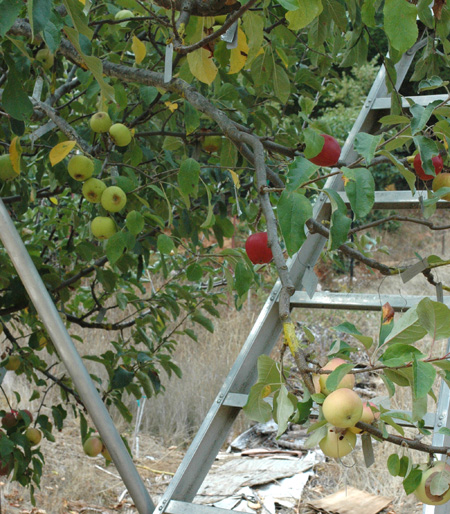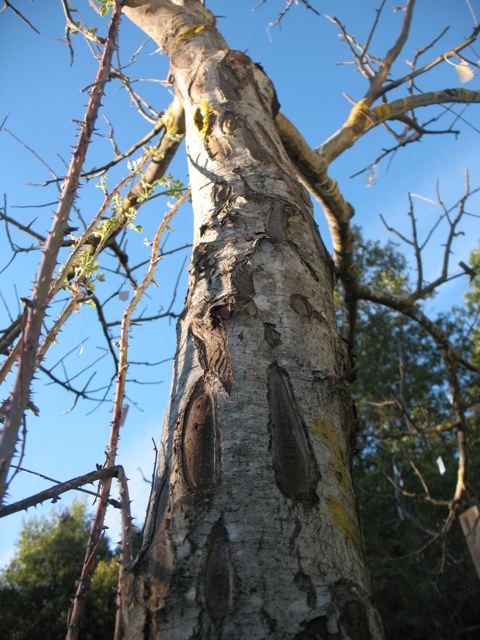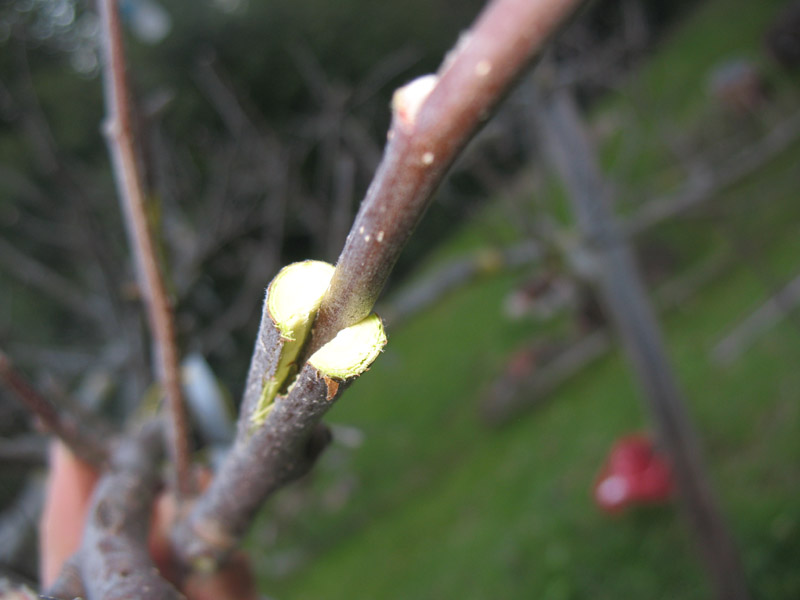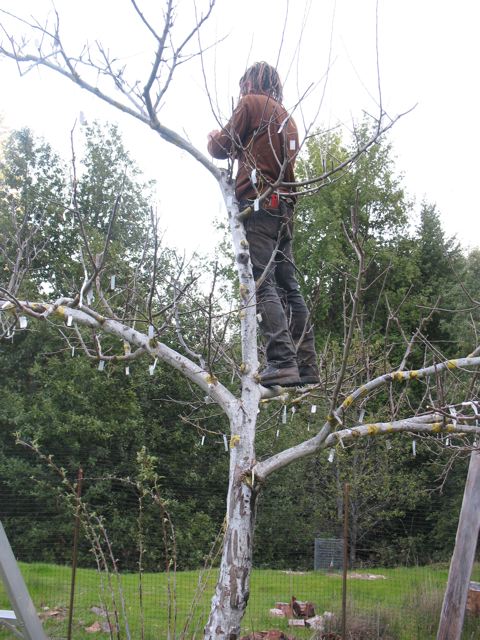Wow, frankentree has really kicked some apple tree butt this year with at least 85 varieties fruiting out of 150 grafts. He looks amazing and I'm pretty excited to retry some old varieties and some new ones as well. it's just a good apple year in general, and most of the trees are coming through year two of severe drought pretty well. The apples on frankentree are on the small side, but I've had some pretty tasty ones so far, like the two great crabs I reviewed in July, Centenial and Trailman. Check it out, its quite a sight!
I know I talk about Frankentree a lot, and multigrafting and frameworking in general, AND I keep threatening to tell you more about how to do it all, but it is coming! I swear! A lot actually ;) I'm trying to tone it down lately, but it's just hard to express myself without cursing like a sailor sometimes! Well heck, what was I saying? Oh yeah, it's definitely coming and it's gonna be good. If I wasn't already stoked enough about the idea, and convinced that it should be the rule rather than the exception, I'm even more stoked after seeing frankentree drooping with so many different apples this year. I WILL influence thousands more people to do this, either directly or indirectly. Maybe not to do it like a totally obsessed nutball such as myself, but at least to stick some new and exciting varieties with varying ripening times on that old tree out back. Well, I'm going to try anyway. That's the plan. Help me out by sharing this video on social media!























